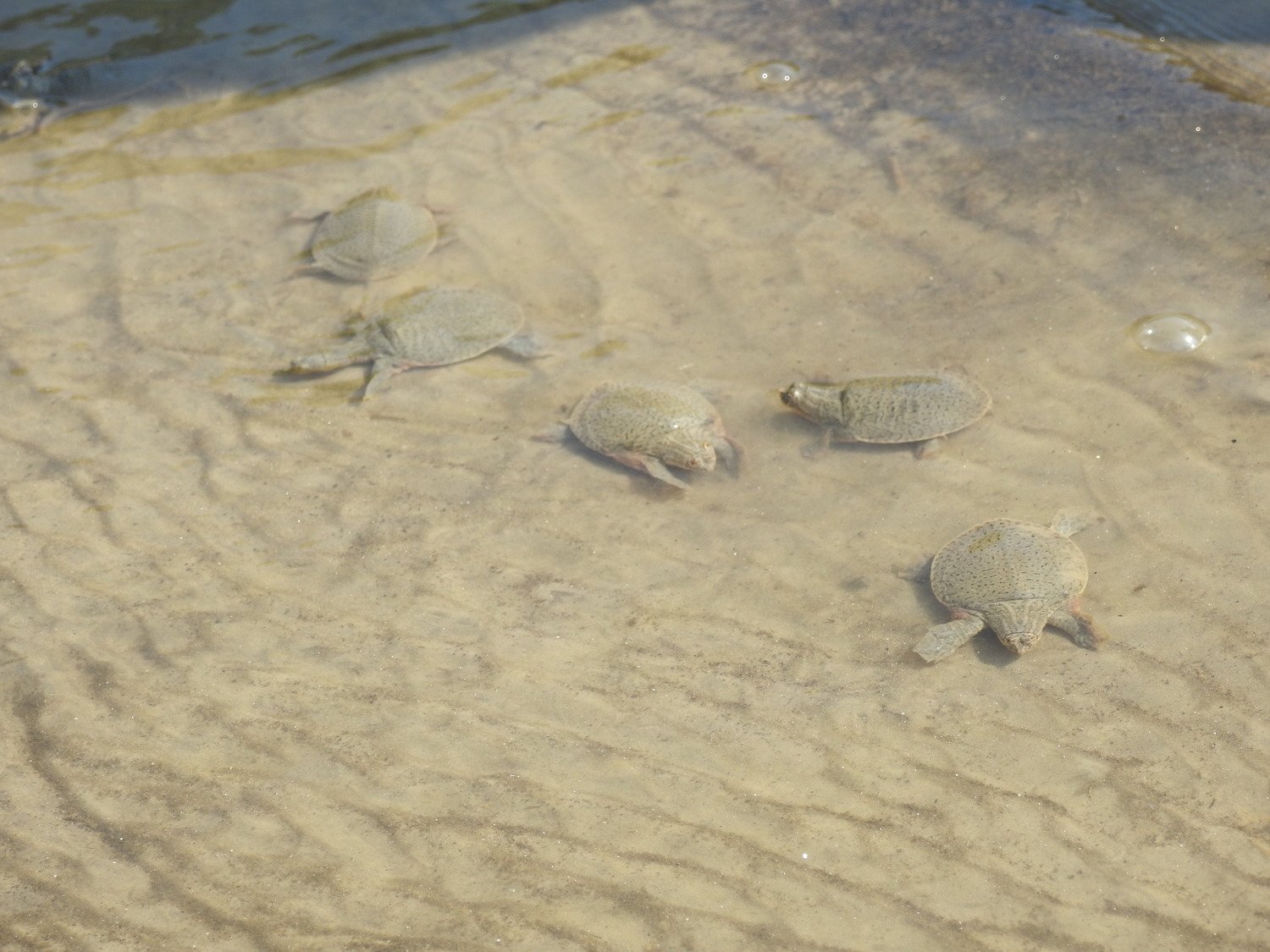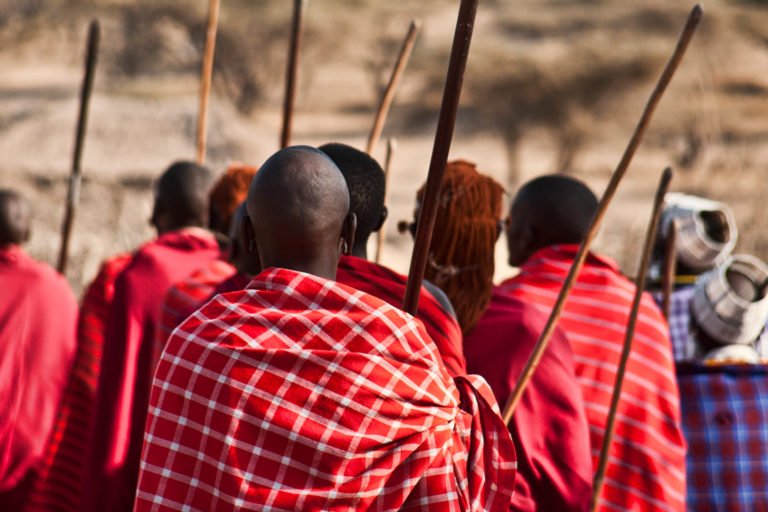- Conservationists in Nepal successfully rescued and hatched hundreds of Indian narrow-headed softshell turtles (Chitra indica) from a riverbank in Chitwan National Park.
- The nesting sites were hit by a flash flood three weeks after the eggs were removed; 375 of the 496 eggs hatched successfully at Chitwan’s gharial breeding center after nearly seven weeks.
- Narrow-headed softshell turtles are an endangered species, threatened by hunting for their meat and consumption of their eggs, as well as degradation of their habitat, but aren’t the subject of any dedicated conservation programs in Nepal.
- Conservationists have called on the government to focus more attention on the species, saying it wouldn’t cost much and would require only the will to act.
KATHMANDU — When conservationist Bed Bahadur Khadka roamed the banks of the Rapti River near Chitwan National Park to monitor gharials released from a breeding center in August 2020, he came across a turtle nest.
“We saw that the nest was very close to the flood zone of the river,” said conservationist Santosh Bhattarai, who visited the site following the discovery. “After looking at the eggs, we concluded that it belongs to Chitra indica.”
They could have left the eggs to fend for themselves, as they were in their natural state, the conservationists wrote in a recent study in the journal Tropical Natural History.
“However, we decided to rescue the eggs, which would most likely be swept away by the monsoon-swollen river and hatch them at the gharial breeding center nearby,” Bhattarai said, adding, “We decided to rescue the eggs as it belonged to a species listed as endangered by IUCN,” the global wildlife conservation authority.
C.indica, or the Indian narrow-headed softshell turtle, is found in large rivers across the Indian subcontinent, such as the Ganges, Sutlaj and Indus. But it faces a host of threats. “We don’t know much about their numbers as we haven’t had a lot of studies on them,” said conservationist Prakash Chandra Aryal, co-author of the book Turtles of Nepal: A Field Guide for Species Accounts and Distribution.
According to the field guide, the turtles are found on the sandy banks of large rivers, near deep and flowing water. They spend the day in the water and come ashore to lay eggs during the monsoon season, from August to September. They feed on fish and mollusks, attacking them at high speed, as well as on carrion.
A key threat to the species is being caught by humans, whether as bycatch or deliberately. In the latter case, they’re considered a delicacy, Aryal said. In some parts of the turtle’s range, people raid the nests for the eggs, which can number from 60 to nearly 180. They then consume the eggs much like they would chicken eggs, Bhattarai said.
“There is a myth among local people that when someone cooks turtle meat, it can be used to feed everyone in the household, regardless of the number of people — everyone gets to eat until they are satisfied,” he said.
Another threat comes from the degradation of river ecosystems across the subcontinent. In Nepal in particular, rivers are under a lot of stress due to human activities such as sand mining, construction of dams, and pollution, Bhattarai said.
Back in Chitwan, when the team patrolled the river again on Sept. 2 and 3, they found two more nests. The first one contained 120 eggs, the second one 197 and the third 179, said Saneer Lamichhane, another co-author of the study.
“It is not every day that we find such nests with so many eggs,” he added.
“Previous studies have shown that the maximum number of eggs in a nest is around 178, but we found 197 in one of the nests,” Bhattarai said. “This could indicate that the mother turtle was in a healthy state.”
The team then collected all the eggs and brought them back to the gharial breeding center to hatch them there, citing the need to “prevent any damage from the flood and to reduce mortality.” Sure enough, three weeks after moving the eggs, there was a flash flood in the Rapti River; the average hatching time for the species is nearly seven weeks.
The study highlights that although the narrow-headed soft turtle is among several threatened species, it’s not on the government list of highly protected wildlife. And while the government has established a turtle breeding center in Chitwan National Park and allowed an NGO to rescue and conserve turtles in eastern Nepal, dedicated conservation actions are still not a priority, the study says.
Bhattarai and his team have called on the government to establish turtle zones within their habitat range, such as the section of the Rapti River that runs through Chitwan National Park, and to prohibit the extraction of resources such as gravel and sand in such areas, as well as limit activities such as bathing, washing of clothes and fishing.
At the Chitwan gharial breeding center, the 496 turtle eggs that the team recovered eventually hatched after an average of 54 days. They produced 375 hatchlings, all of which were then released in the Rapti.

“They were lucky that we found them and hatched them at the breeding center,” Bhattarai said. “But many other eggs laid during the monsoon … may have been swept away by the river. We desperately need a separate program to save these turtles. It’s not going to cost a lot; all we need is the will to do that.”
Banner Image: Hatchlings of Indian long-headed turtle at the Gharial Breeding center in Chitwan. Image courtesy of Bed Khadka.
Feedback: Use this form to send a message to the author of this post. If you want to post a public comment, you can do that at the bottom of the page.
Citations:
Khadka, B. B., Lamichhane, S., & Bhattarai, S. (2022). Notes on successful nest relocation of Chitra indica (Gray, 1831) from Chitwan National Park, Nepal. Tropical Natural History, 22(1), 51-55. Retrieved from https://li01.tci-thaijo.org/index.php/tnh/article/download/255984/174837
Aryal, P. C., Dhamala, M. K., Bhurtel, B. P., Suwal, N. K., & Rijal, B. (2010). Turtles of Nepal: A field guide for species accounts and distribution. Kathmandu, Nepal: Environmental Graduates in Himalaya (EGH), and Companions for Amphibians and Reptiles of Nepal (CARON).












